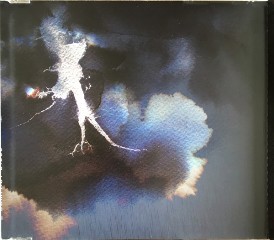Tippett - Symphonies Nos 3, 4 & B flat (2019)
Tippett - Symphonies Nos 3, 4 & B flat (2019)

Symphony No 3 (1970-72) (57:49) 1-1 Part One: Allegro Non Troppo E Pesante (Arrest) – Allegro Molto E Con Grande Energia (Movement) - 13:06 1-2 Part One: Lento 15:32 1-3 Part Two: Allegro Molto - 6:42 1-4 Part Two: Slow Blues: Andante – 'As I Drew Nurture From My Mother's Breast' - 3:28 1-5 Part Two: Fast Blues: Allegro 'O, I'll Go Walking' 2:51 1-6 Part Two: Slow Blues: Largo – 'I Found The Man Grown To A Dwarf' - 5:03 1-7 Part Two: Pochissimo Meno Mosso 'They Sang That When She Waved Her Wings' 11:03 Symphony No 4 (1976-7) (35:39) 2-1 Tempo 1: Slow Crotchet Pulse (quaver = C100) Introduction And Exposition 4:02 2-2 Tempo 1 Fig. 21, First Development 4:41 2-3 Tempo 1 Fig. 52, Slow Movement 8:42 2-4 Tempo 2: Steady Crotchet Pulse (crotchet = C60) Fig. 78, Second Development 3:19 2-5 Tempo 3: Fast Crotchet Pulse (crotchet = C90) Fig. 100, Scherzo 4:19 2-6 Tempo 1 Fig. 139, Third Development – 5:02 2-7 Tempo 1: Fig. 160, Recapitulation and coda 5:34 Symphony In B Flat (1932-3, Rev. 1934, 1938) First Recording (27:09) 2-8 Lento – Allegro Con Fuoco 10:43 2-9 Adagio – Poco Più Andante – Adagio 7:09 2-10 Allegro E Cantabile 9:17 Rachel Nicholls - soprano Mark O'Keeffe - flugelhorn BBC Scottish Symphony Orchestra Martyn Brabbins - conductor
The music of Sir Michael Tippett has gone in and out of fashion, but the generally strong cycle of his symphonies by the BBC Scottish Symphony Orchestra, concluded here, argues for their rediscovery. Part of the reason for Tippett's persistence is that he doesn't fit into any of the usual boxes for 20th century music. His music is knotty, and approaches atonality, but it nevertheless seems to fit seamlessly into the English tradition. Moreover, he was touched by American vernacular traditions, as can be heard clearly in the second section of the Symphony No. 3, with its three consecutive movements designated as blues. Sample them, as they are recognizable as blues but are not simple evocations of popular style. If you don't know the Symphony No. 3, this is a good chance to get to know its mixture of influences, which range from Beethoven's Ninth to Bessie Smith (check the informative notes, which point out that the soprano-flugelhorn duet passages evoke those of Smith and Louis Armstrong). It's a diverse work but not eclectic; Tippett's big, intense personality is stamped on every page, and the straightforward performance here encompasses its totality. The Symphony No. 4, an orchestral display piece written for the Chicago Symphony in the glory days of Georg Solti, is a bit less successful; it opens with a famously unsuccessful sound of a baby's breathing, here accomplished via a digital sample spliced in afterward. It sounds OK, but it doesn't solve the basic problem. A bonus is the early Symphony in B flat major of 1933, unnumbered because Tippett withdrew it. It certainly sounds like Sibelius, but contrary to the opinions of the annotators it has hints of the composer's later language to these ears, and it will certainly be of interest to Tippett fans. Recommended, with solid performances. ---James Manheim, AllMusic Review
download (mp3 @320 kbs):
yandex mediafire ulozto bayfiles








